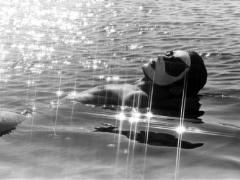The friction of bodies. Film and video about the 1980s in Latin America
9 January – 15 February 2013
Museo Reina Sofía, Madrid
The friction of bodies is a film and video series that presents a broad panorama of different artistic and political manifestations from the 1980s, which arose during and co-existed with the years of repression in Latin America. Many of these videos and films, most of which have never been shown publicly outside of their original contexts, demonstrate the emergency of new political subjects and forms of subcultural participation. The program also includes recent film proposals that look back at the agitated times of the 1980s in this context, to offer different readings or to activate a memory still throbbing within us.
The expression the friction of bodies (el roce de los cuerpos) returns to the idea developed by the Argentine art historian Roberto Amigo about how the new forms of artistic activism in the 1980s in different places in Latin America took shape. If in the 1960s and 70s the linking of art and politics arose within traditional moulds related to the legacy of Marxism, in the 1980s that way of operating underwent a radical transformation. Encounters, festivities, the carnavalisation of protest and other forms of direct contact between bodies, whether in the private sphere or in a clandestine manner, would be the way to create a public counter-sphere in opposition to the devastating effects of violence.
Radical and libertarian attitudes thus appear, interweaving sexual dissidence, countercultural production, occupation of the streets, anarchism, social demands and civil disobedience or the demand that the victims of political disappearances come back to life, spaces and rituals that were previously invisible. This experimental wave brought a new way of thinking about and intervening in political happenings, using imaginaries of resistance and activism that favoured the building of new bodies and socialities, and the rebuilding of the emotional ties that had been broken by terror.
These film and video productions were made by documentary makers, artists, researchers, historians and people involved in these episodes. They include: amateur productions arising in underground spaces; works with the visual sophistication of a renewed cinematographic experimentalism; films of limited commercial circulation that draw connections between crisis periods by examining urban violence, music and drugs; and also new productions made especially for this exhibition. Using memory, narrative, recovered documents and images, and also musical production, this living archive of those events attempts to rethink the ways in which film and video have given a different visibility to a multitude of dissident bodies and behaviours.
This post is also available in: Spanish


 Home
Home
